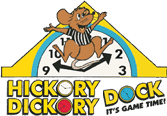How to Open an Amusement Park: A Step-by-Step Guide to Launching Your Own Thrilling Adventure
- 1. Planning and Conceptualizing Your Amusement Park
- 2. Choosing the Perfect Location
- 3. Designing the Park's Layout and Attractions
- 4. Securing Financing for Your Amusement Park
- 5. Navigating Permits and Regulations
- 6. Marketing and Promoting Your New Park
- 7. Running the Park and Ensuring Customer Satisfaction
1. Planning and Conceptualizing Your Amusement Park
Opening an amusement park is an exciting venture, but it all starts with careful planning. The first step is defining your vision for the park. What kind of experience do you want to provide? Will it be a thrilling roller coaster destination or a family-friendly theme park with interactive experiences? Defining your target audience is key, as it will guide the types of attractions, theming, and overall atmosphere.
Consider the competition and the current market trends. Are there other parks in the area? How will your park stand out? By thinking about the unique offerings your park can provide, you'll have a better chance of creating a memorable experience that keeps visitors coming back.
2. Choosing the Perfect Location
The location of your amusement park plays a pivotal role in its success. Ideally, your park should be easily accessible to your target audience, whether that means being close to a major city, a popular tourist destination, or a region with high population density.
For instance, Hickory Dickory Park, a charming family-friendly amusement park, strategically chose a location that caters to both local families and tourists. The success of this park proves that understanding your audience and selecting the right location are critical for maximizing foot traffic.
3. Designing the Park's Layout and Attractions
Once you've got your concept and location locked down, it’s time to design the park. The layout should be intuitive and easy to navigate, with clearly marked paths and distinct zones. This helps guests easily find their way and ensures they can enjoy each area of the park without feeling lost or overwhelmed.
When designing attractions, balance thrill rides with more relaxed experiences. For example, roller coasters might appeal to adrenaline junkies, while merry-go-rounds and interactive play areas are great for younger visitors. Integrating diverse options will attract a wider range of guests, increasing the overall appeal of your park.
4. Securing Financing for Your Amusement Park
Launching an amusement park requires significant financial investment. You’ll need funds for land acquisition, construction, ride installations, staffing, and marketing. Many entrepreneurs look for investors, loans, or partnerships to help cover these costs.
A successful real-life example is the expansion of Hickory Dickory Park, which was able to secure investors due to its clear business plan and promising target market. Having a strong financial foundation is essential for the sustainability and growth of your park.
5. Navigating Permits and Regulations
Before you can open the gates of your amusement park, you must navigate a series of permits and regulations. These can vary depending on your location, but you’ll typically need safety inspections, zoning permits, and environmental approvals.
Working with legal and industry professionals is advisable to ensure all necessary documents are in place. In the case of Hickory Dickory Park, the team worked closely with local government officials to ensure that all required permits were obtained and safety regulations were met, ensuring a smooth and successful opening.
6. Marketing and Promoting Your New Park
Marketing is crucial for driving visitors to your amusement park. Building anticipation before your park opens is key to creating excitement. Use social media, local press, and influencers to spread the word and generate buzz.
Hickory Dickory Park’s marketing strategy involved a series of sneak peek videos and partnerships with local schools and community organizations. By engaging with the local community and offering promotions, they were able to attract a loyal customer base early on.
7. Running the Park and Ensuring Customer Satisfaction
Once your amusement park is up and running, providing a top-notch guest experience is paramount. Regular maintenance of rides, keeping the park clean, and training staff to offer excellent customer service are essential components of a successful operation.
At Hickory Dickory Park, continuous feedback from guests is taken seriously to improve operations and introduce new attractions. Listening to your visitors and adapting to their needs will help you maintain a positive reputation and keep visitors returning for more.
Ready to start planning your own amusement park adventure? If you’re inspired by the success stories like Hickory Dickory Park, consider exploring more about amusement park planning and design. Visit Hickory Dickory Park for more insights and inspiration for your park journey!




































